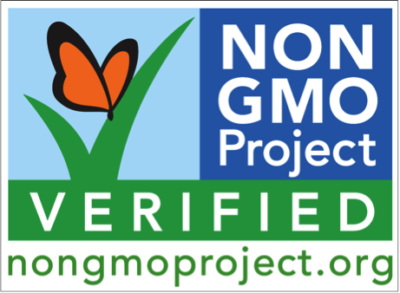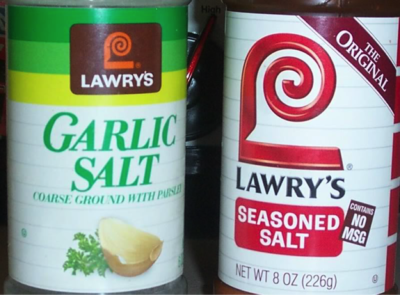Brandon R. McFadden is an assistant professor in the Food and Resource Economics Department at the University of Florida. His research focuses on consumer behavior, food choice and attitudes towards contemporary agriculture production. He has analyzed the effects of advertising on GMO labeling initiatives, cognitive biases on genetically modified goods and brain activity when making choices related to food technology and animal welfare.
By Brandon McFadden
University of Florida, Assistant Professor of Food and Resource Economics
The National Bioengineered Food Disclosure Standard, which requires a mandatory label for bioengineered food (also commonly referred to as genetically modified food,) was signed into law by President Obama on July 29, 2016. Food manufacturers have two years from the signing to comply with the legislation. Previous to the legislation, labeling of bioengineered food was voluntary. Under the current voluntary labeling regime, food producers and manufacturers differentiate their products as non-bioengineered and charge a premium. You may be familiar with either of the labels below.

 Any food labeled USDA Organic is non-bioengineered by definition and the Non-GMO Project is an organization that verifies food as non-bioengineered. As an economist, these labels were a delightful signal that markets respond to consumers’ desires by providing non-bioengineered options for consumers who were willing to pay a premium for not only the food, but also for the information.
Any food labeled USDA Organic is non-bioengineered by definition and the Non-GMO Project is an organization that verifies food as non-bioengineered. As an economist, these labels were a delightful signal that markets respond to consumers’ desires by providing non-bioengineered options for consumers who were willing to pay a premium for not only the food, but also for the information.
Motivation for the legislation was predicated on consumers’ desire to know if the food consumed was bioengineered. When consumers are asked, the majority of consumers (82%) indicate a preference for a mandatory label. However, the majority of consumers (65%) believe the decision of labeling should be made based on the views and advice of experts and not the average American. Moreover, a majority (58%) prefer the issue of mandatory labeling be decided by the Food and Drug Administration, while only a small proportion prefer the decision to be made by Congress (9%), which is how it was decided. A smaller proportion (8%) prefer the issue be decided by a state-level initiative, which is evident because while state-level initiatives for a mandatory label passed in Connecticut, Maine and Vermont, they failed to pass in more states. Further complicating the issue of understanding consumer desire for labeling is that a majority of consumers (80%) also prefer a mandatory label for food containing DNA. Such a policy would result in a label that provides almost zero information, as all fresh produce and meat contain DNA. Thus, it is not clear that consumer polls should be used to determine the need for legislation (learn more about what consumers don’t know about genetically modified food and how that affects beliefs here.)
The effects of the legislation will greatly depend on consumer reaction to a mandatory label. To illustrate how a mandatory label may affect consumer behavior, take a look at the products below.

Did you notice the “Contains NO MSG” label? What does the label communicate to you? At first, you may say, “Brandon, obviously the label indicates that the product does not contain MSG.” And while that is obviously true, the label may have also communicated that MSG is bad and should be avoided (which is not true) even if you had not previously ever heard of MSG. This is called a “signaling effect” and, indeed, research has found that consumers are more concerned about bioengineered food when the label is mandatory compared to when the label was voluntary. Thus, consumers may avoid bioengineered foods because the mandatory label signals that something is wrong with bioengineered food.
The vast majority of raw, or whole, foods in the grocery store are not bioengineered. The majority of bioengineered foods consumed are ingredients in packaged foods. These ingredients come from derivatives of field corn (not sweet corn that you eat at barbeques) and soybeans. If the legislation increases food costs, which it probably will because legislation is not free, it is likely most of the increases will be noticed in packaged foods compared to raw foods. Minor increases in food costs may not affect all consumers, as the average American spends under 10% of disposable income on food. However, any increase in food cost will affect many consumers. In 2015, more than 45 million people participated in the Supplemental Nutrition Assistance Program and spending on nutrition represents 80% of the outlays under the 2014 Farm Act. This means that increases in prices of food will likely be noticed most by the families that are already stretching food dollars. When the costs of legislation take a larger percentage of income by those who can afford it the least, it is referred to as a regressive tax. The National Bioengineered Food Disclosure Standard will surely result in a regressive tax.
For more information visit:
National Bioengineered Food Disclosure Statement What consumers don’t know about GM food and how that affects beliefs GMO labeling laws keeps failing, here’s why we can expect more Is MSG bad for your health? The signaling effect of mandatory labels on genetically engineered food USDA: Americans spend just under 10 percent of their incomes on food Supplemental Nutrition Assistance Program Participation and Costs USDA Agricultural Act of 2014: Highlights and Implications Understanding Taxes
















